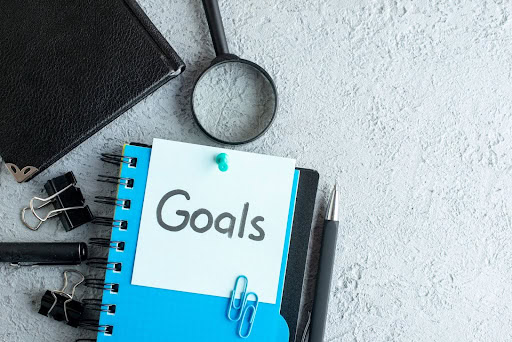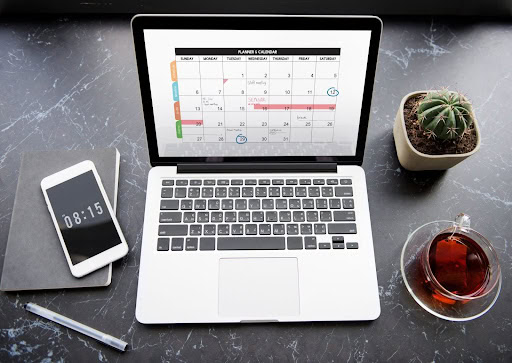Ever feel like your to-do list keeps growing no matter how hard you work? You’re not alone. In my coaching practice, one of the most common concerns clients bring to me is: “How can I be more productive without burning out?”
The truth is, productivity isn’t just about doing more — it’s about doing what truly matters with clarity, energy, and intention.
In this article, I’ll share top productivity tips I’ve seen work across hundreds of coaching conversations — with entrepreneurs, leaders, creatives, and busy professionals alike.
Let’s dive in.
Myth About Productivity: It’s Not About Getting More Done
Many people believe productivity means cramming more tasks into the day. But productivity, as I’ve seen time and again, is about aligning your actions with your priorities.
It’s not just efficiency — it’s effectiveness. When your energy goes into the right things, you feel less overwhelmed and more fulfilled.
1. Set Clear, Purpose-Driven Goals

Let’s face it — most people start with goals like “I want to be more productive” or “I need to get healthier.” But these kinds of vague intentions often fizzle out because they lack direction and emotional connection.
In life coaching, we treat goals as more than just tasks — they’re compasses that align with your deeper purpose. Instead of chasing productivity for productivity’s sake, we guide clients to set specific, meaningful goals that reflect what truly matters to them.
For example:
Instead of saying “I want to do better at work,”
Try: “I want to improve my communication with clients so I can increase retention by 20% in the next 3 months.”
That’s a goal with:
- ✅ Clarity (you know what success looks like)
- ✅ Purpose (it ties to client relationships and business success)
- ✅ A timeline (so you can track progress and adjust)
Why does this approach work?
👉 Because clarity fuels action.
When your goal connects to a deeper why, you’re more likely to commit, stay focused, and push through resistance. It becomes easier to say “no” to distractions and “yes” to actions that move the needle.
🎯 Coaching Tip:
Break big goals into smaller milestones. For example:
- Week 1: Schedule 1:1 feedback calls with 3 clients
- Week 2: Analyze feedback and identify patterns
- Week 3: Test one improvement in your client communication style
And don’t wait until the end to celebrate. Every milestone is a win worth acknowledging. Celebrating progress — no matter how small — builds momentum and keeps motivation alive.
2. Use Time Blocking Instead of To-Do Lists

Let’s be honest — we all love making to-do lists. They feel productive in the moment, but more often than not, they leave us overwhelmed. That’s where time blocking becomes a game-changer.
Instead of writing a long list of tasks, block out your calendar with dedicated time slots for each task or task type. For instance:
- 9:00–10:30 AM – Deep work (like writing, planning, strategy)
- 10:30–11:00 AM – Responding to emails
- 2:00–3:00 PM – Client sessions or calls
This method gives your day structure and eliminates the anxiety of constant decision-making.
Why it works:
Time blocking helps reduce decision fatigue, increases focus, and ensures your most important work gets done during your peak energy hours.
Coaching Tip:
Use digital tools like Google Calendar, Notion, or Sunsama to make time blocking easy and visual. Color coding can help differentiate types of tasks and bring a sense of order to the chaos.
3. The ‘One Thing’ Rule
Here’s a simple yet transformative question I often ask clients:
“What’s the ONE thing I can do today that will make everything else easier or unnecessary?”
This question comes from the bestselling book The ONE Thing by Gary Keller and it aligns beautifully with how our brains are wired — we perform best when we focus on one meaningful task at a time.
Instead of scattering energy across 10 minor tasks, hone in on one that truly moves the needle.
Why it works:
This rule promotes focus and intentionality. It helps you avoid the trap of “busy work” and directs your attention to what matters most — the high-leverage work that creates real results.
Coaching Tip:
Identify “One Thing” first thing in the morning, before checking emails or messages. It sets the tone for a proactive, not reactive, day.
4. Breaks and Rhythms: Productivity Loves Rest

If you believe that productivity means working non-stop — it’s time for a mindset shift.
Top performers understand that rest fuels results. Science backs this too: our brains operate in ultradian rhythms, cycling through 90–120 minutes of peak focus followed by a natural dip. Ignoring this rhythm leads to mental fatigue and decision overload.
Why it works:
When you take short, intentional breaks, you actually become more productive. Rest improves focus, memory, creativity, and even emotional regulation.
Coaching Tip:
Use Pomodoro Technique — 25 minutes of focused work followed by a 5-minute break. After four cycles, take a longer 20-minute break. Alternatively, do short walks, breathing exercises, or screen-free breaks after deep work.
Remember, rest isn’t a luxury — it’s a strategy.
5. Weekly Reviews: Your Secret Weapon
I can’t emphasize this enough: a weekly review is one of the most powerful tools for self-leadership and sustained productivity.
Here’s what it looks like: every week (ideally Friday afternoon or Sunday evening), set aside 30–45 minutes to reflect and reset.
Ask yourself:
- What went well this week?
- What drained my energy?
- What’s one thing I can improve next week?
- What’s my #1 priority moving forward?
Why it works:
Weekly reviews bring awareness and alignment. Instead of running on autopilot, you become intentional about how you spend your time and energy. It’s your chance to learn from the past and plan for the future.
Coaching Tip:
Pair review with a weekly planning session. Use that momentum to map out your calendar and set clear goals — so you walk into Monday feeling confident, not chaotic.
6. Energy, Not Just Time, Is the Real Asset

Most people focus solely on managing their time — but what truly fuels productivity is managing your energy.
Everyone has natural energy peaks and dips throughout the day. Maybe you’re a morning thinker who hits your creative stride at 7 AM. Or perhaps you find your groove in the quiet of the evening. By identifying when you feel most alert, creative, or focused, you can schedule your most important work during those windows.
🔍 Why it works:
When your tasks align with your body’s natural energy levels, work becomes smoother, faster, and more enjoyable. It reduces frustration and increases output — without the burnout.
💡 Coaching Tip:
Track your energy for one week. A simple journal noting your energy levels at different times of day will reveal your personal rhythm. From there, help them restructure their schedule — reserving low-energy slots for admin or errands and high-energy slots for deep, strategic work.
7. Reduce Decision Fatigue
Did you know that every little decision — what to wear, what to eat, when to check your phone — drains mental energy? This is called decision fatigue, and it’s a silent productivity killer.
Successful leaders like Steve Jobs and Mark Zuckerberg famously simplified routine decisions so they could save brainpower for the work that really mattered. The more you automate low-impact choices, the more clarity and focus you have for meaningful action.
🔍 Why it works:
Fewer decisions = more mental clarity. It creates space for strategic thinking and emotional resilience.
💡 Coaching Tip:
Build micro-routines into your daily life. Try meal prepping, creating a capsule wardrobe, or batching similar tasks together. Establish simple morning and evening rituals. Every bit of structure you create frees up mental space for what truly matters.
8. Focus on Progress, Not Perfection
Perfectionism might seem like a strength — but in reality, it’s a productivity trap. It causes overthinking, procrastination, and fear of starting.
When clients chase perfection, they delay execution and get stuck in endless revisions. But when they embrace progress, they stay in motion and build confidence with each step forward.
🔍 Why it works:
Progress fuels momentum. It encourages learning, adaptability, and a growth mindset — all essential for sustained performance.
💡 Coaching Tip:
Reframe the goal from “perfect” to “improvement.” Track small wins, no matter how minor. Use affirmations like “done is better than perfect” and “progress, not perfection.” This mindset shift unleashes creativity and reduces burnout.
Final Thoughts: Productivity as a Lifestyle
The most productive people I’ve worked with aren’t necessarily the busiest — they’re the most intentional. They’ve learned how to say no, delegate, rest, and focus, all while keeping the bigger picture in mind.
Productivity isn’t a hack — it’s a lifestyle of alignment.
Start small. Choose one strategy from above that resonates with you and commit to it for a week. Then build from there. Over time, these small shifts create big changes.
If you’re feeling stuck or want to bring more intention to how you work and live, coaching can help.
👉 Let’s talk → Book a personalized session
Get Your Free Checklist Now
Just enter your email below, and I’ll send the checklist straight to your inbox.
"*" indicates required fields
✔️ No spam, ever. Just helpful tools and insights to support your personal growth.
Or Jump Straight Into a Conversation
Prefer to skip the download and get right to the heart of what’s holding you back?
Let’s have a quick call to explore how coaching can support your goals.









0 Comments